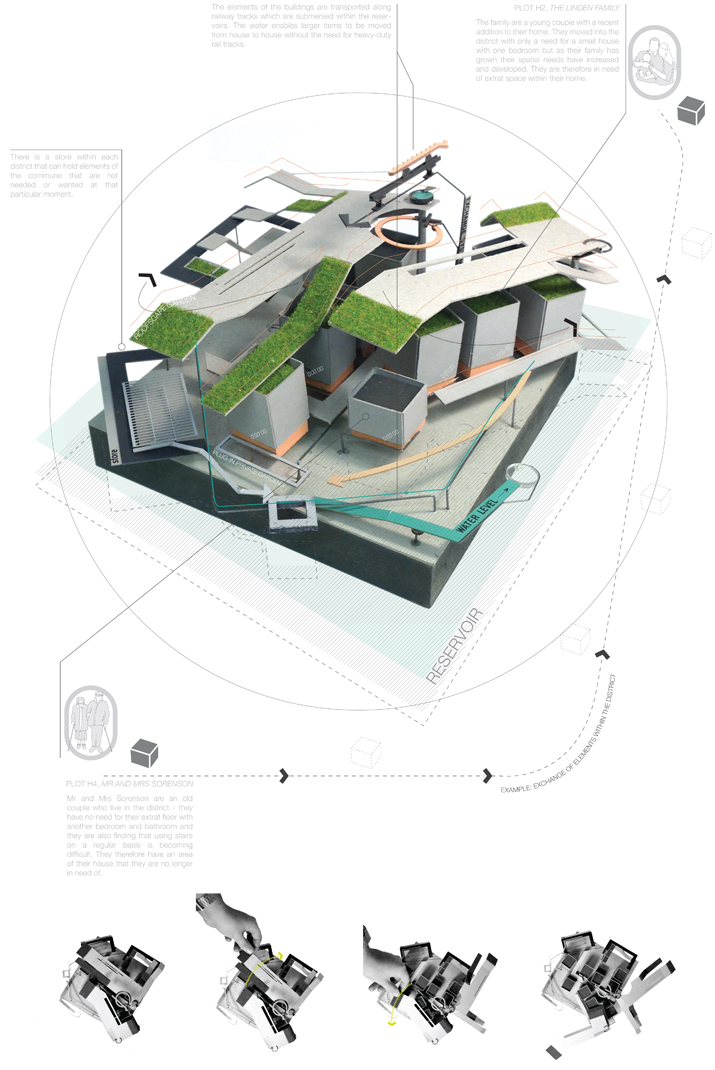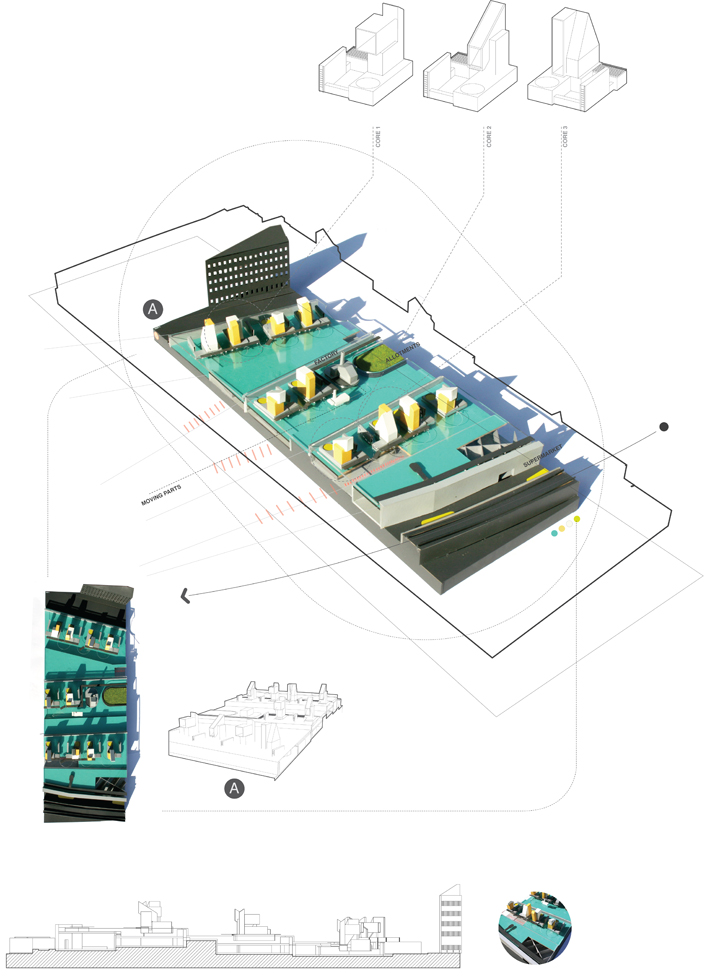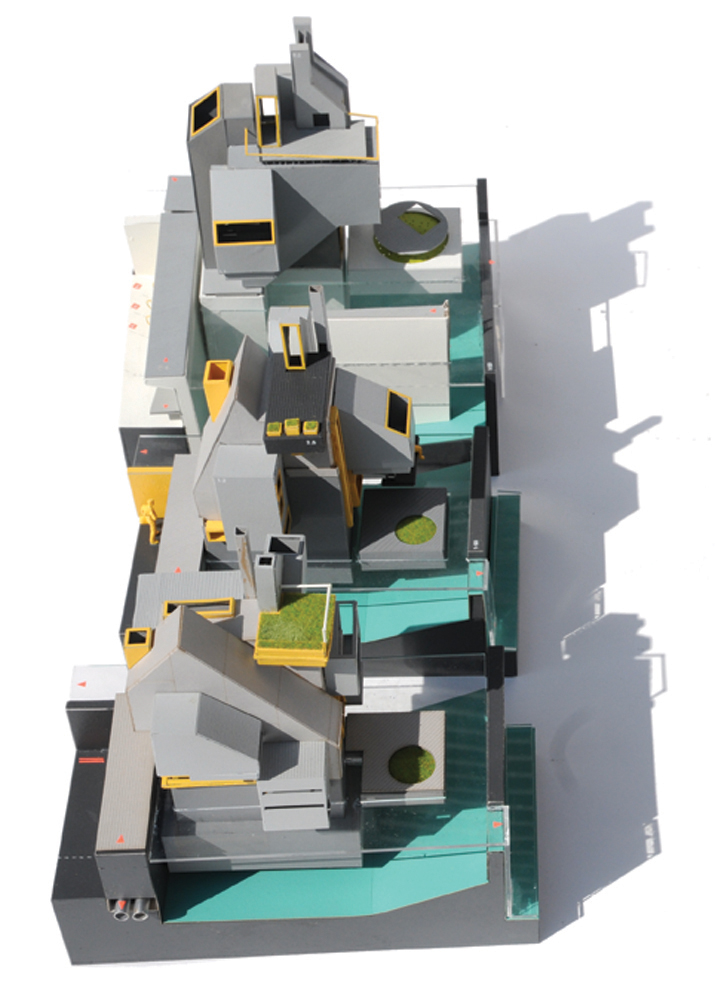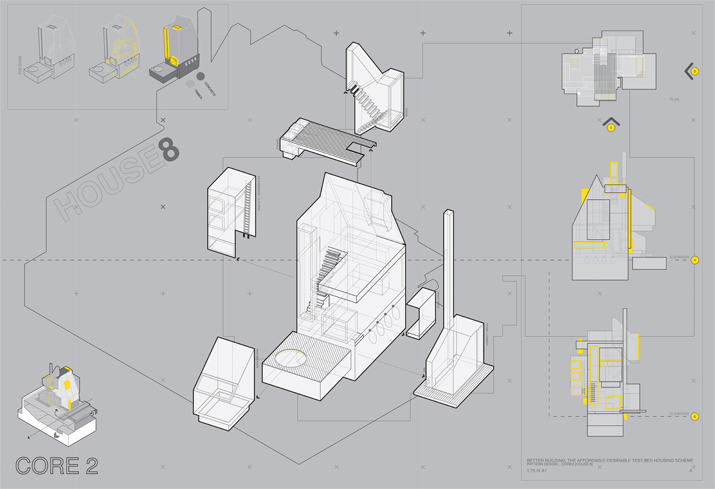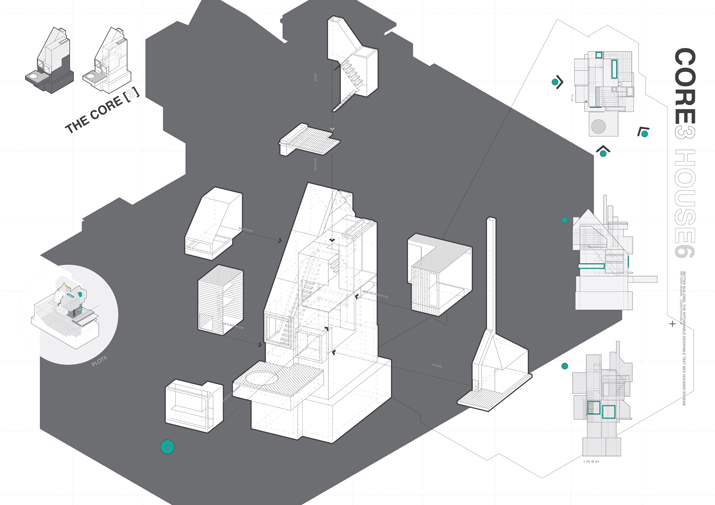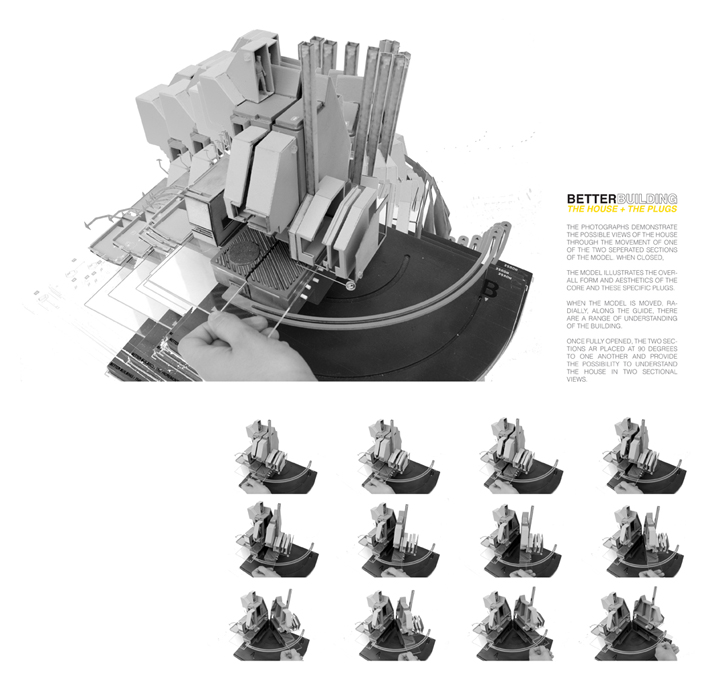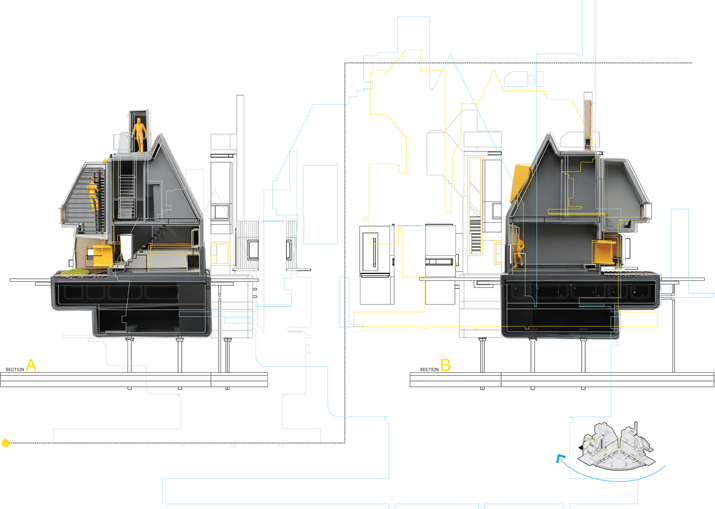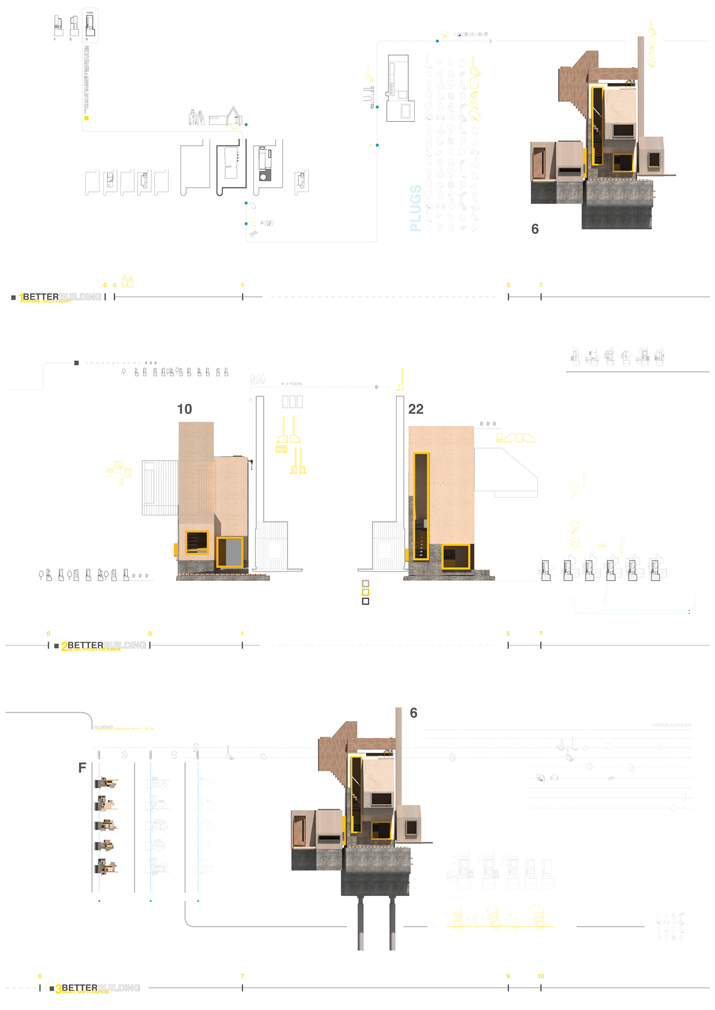BETTER BUILDING | Copenhagen, Denmark | Unit 21 | 2014
Awarded Distinction for Thesis
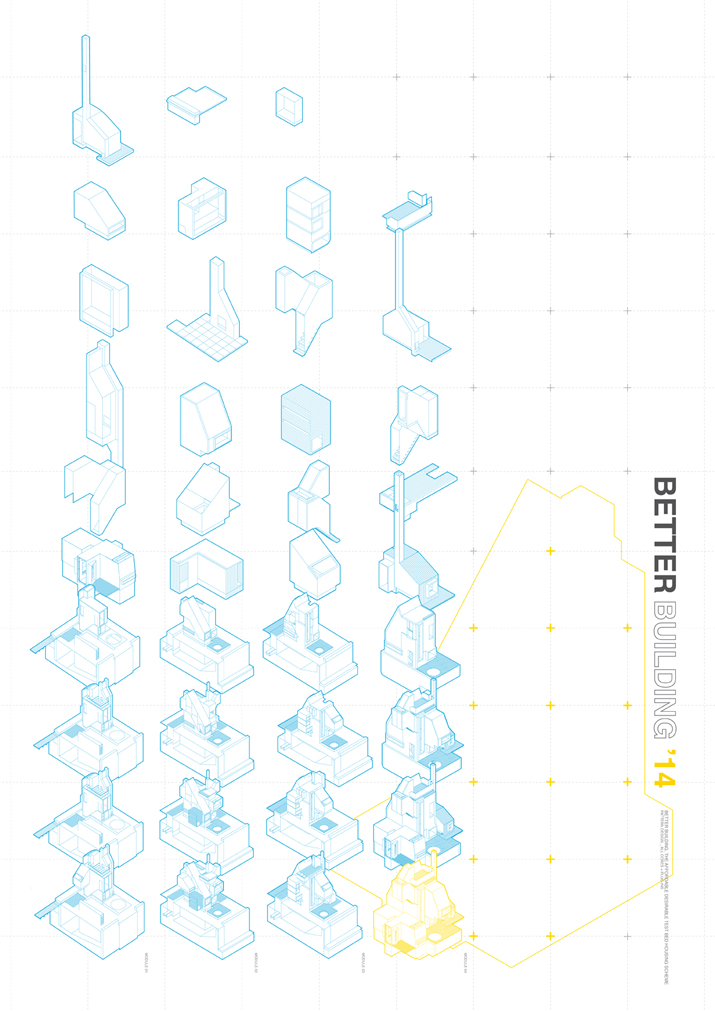
We are experiencing an increasingly prevalent housing crisis, where there is a shortage of quality, affordable family homes within UK cities and across the rest of Europe. Copenhagen, capital city of the ‘happiest’ country in the world, is one of them. Affordable housing for the masses, within our growing urban contexts must be radically altered and re-thought in order to address this worsening situation.
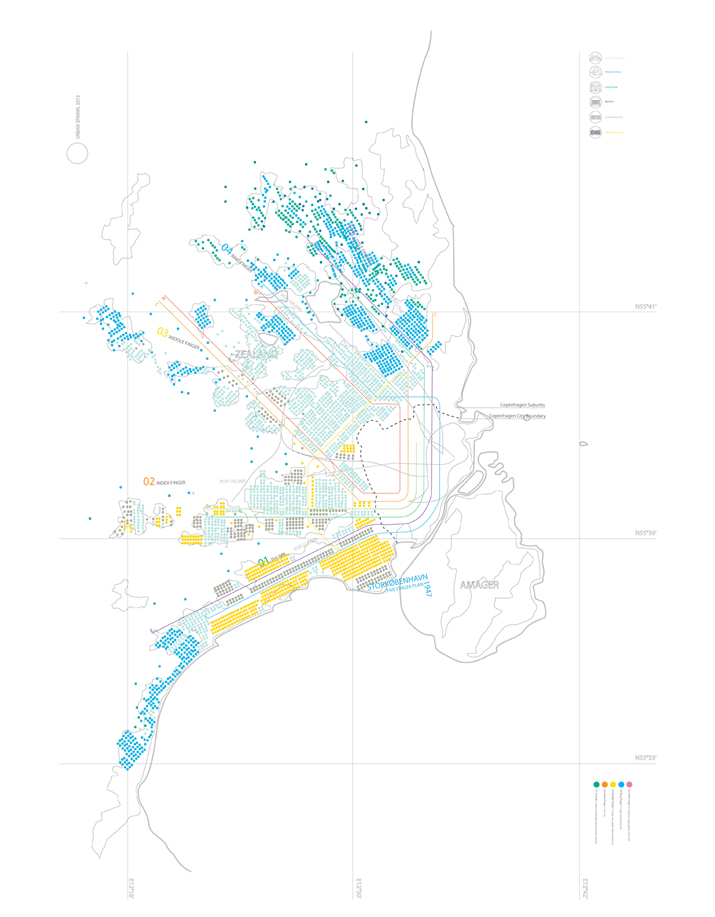
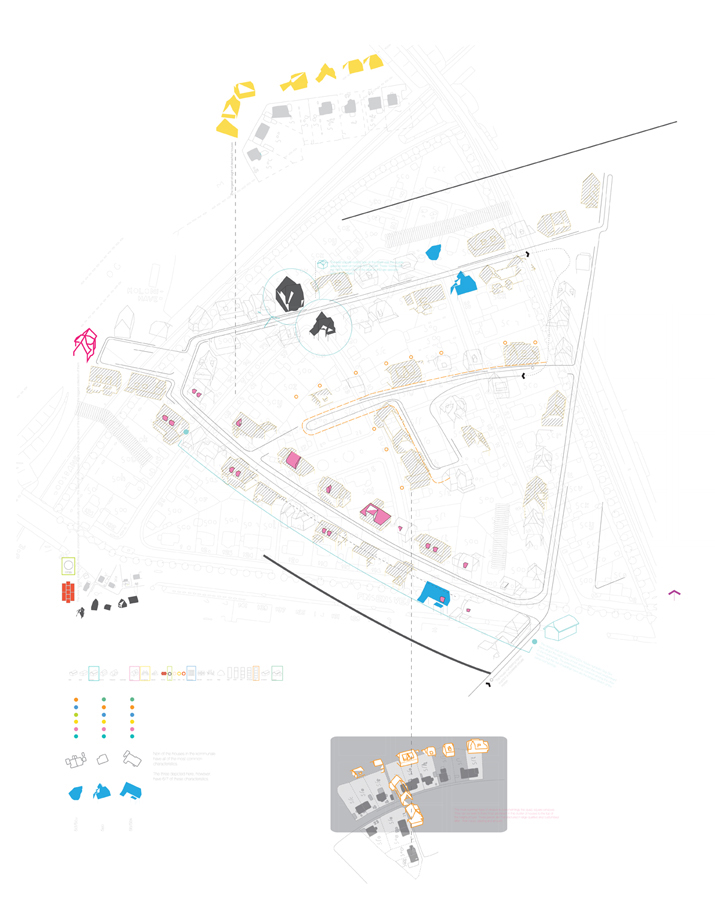
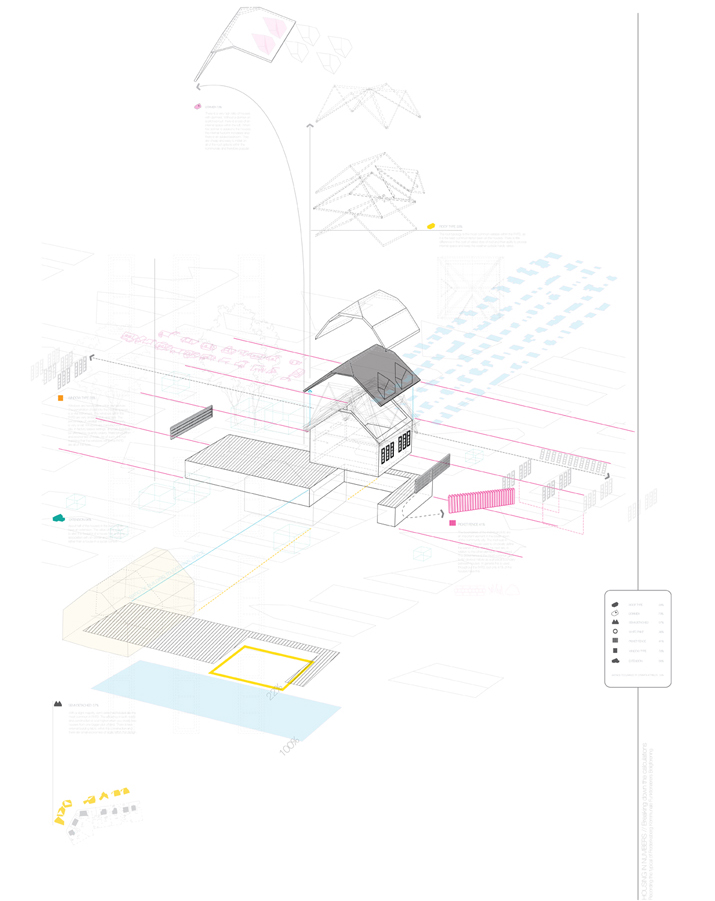
Reflective and referential analysis of a 20th century Danish architectural movement, Bedre Byggeskik, led to the development of proposed, desirable criteria for the design of a modern housing scheme: 1. to ensure the occurrence of visual variation between built homes and 2. maintain traditions of house to garden ratios.Located in Copenhagen, the proposal discusses the beneficial development of floating incrementally-built family houses. The scheme adapts to climatic changes and flooding facing our urban landscapes; the houses float within individual reservoir plots to increase the number of possible site locations.
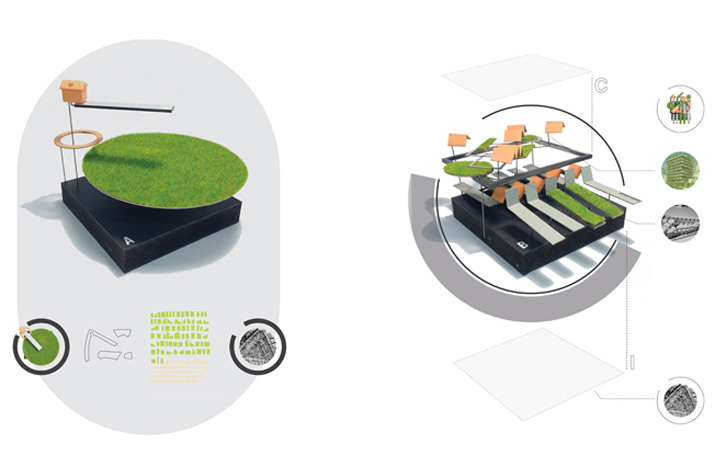

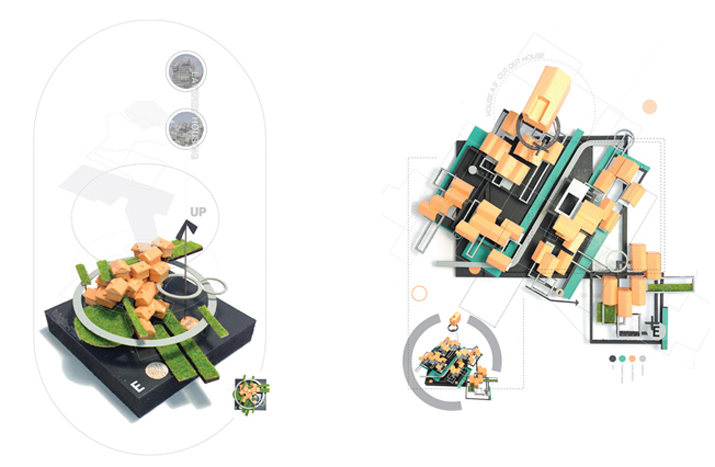
A building begins as a small, structural service core that is chosen from three options, by the resident, and developed over time. Historical notions of pattern book design, mass production and site+services developments, combined with concepts seen in mass customization and lean production, enable the proposal of houses that are both affordable and incrementally constructed. Homes are developed over time, to suit the household financially and socially, through the addition of timber plug-in spaces. These elements are chosen, manufactured and constructed, by the inhabitants through a digital database, utilising the architectural and construction advancements within CAD-CAM and CNC.
